The Gate bo-1 Read online
Page 13
“You tell me,” Lake said.
“I don’t know what was specifically in the box,” she said, leading him toward the door. “Therefore I can’t extrapolate based on data I don’t have.”
“In other words, you don’t have a clue,” Lake said.
“Do you?” she shot back as she locked the door.
“Not yet. Why do you have all these documents?” Lake asked.
“I have a Ph.D. in history and I teach here,” Harmon said as they reentered her office. She sat back down behind her desk and Lake reclaimed the leather chair. “My area of specialty is Pacific Studies, mid-twentieth century. The biggest event of that time period was World War II. Every academic has to find their niche. Some pick their niche then go around accumulating source material. I had the general area and when I found out there was a treasure trove of source material about the Japanese navy during World War II so close at Alameda, it didn’t take a sledgehammer for me to see what area I should specialize in.”
“Since all we know is a rough time period,” Lake said, “why don’t we focus on that?” “August 1945 was the end of the war,” Doctor Harmon said. She closed her eyes and ticked off each item as she said it. “The key events of that month in the Pacific were the atomic attacks on Hiroshima and Nagasaki; on the eighth of August the Soviet Union declared war on Japan; numerous conventional air strikes were conducted against Japanese mainland targets, primarily the cities of Tokokawa, Yawata,Hikari, Nagoya and Toyama with the last air raid coming on the fourteenth of August; the U.S. and British fleets conducted air strikes from carriers in the vicinity of Tokyo; on the fourteenth of August the Emperor made a broadcast to the people telling them that they must ‘bear the unbearable’; the fifteenth of August is what we call VJ Day; by the eighteenth of August the Russians over ran most of Manchuria; and on the twenty-seventh of that month the Allied Reel anchored in Tokyo Bay in preparation for the surrender which was signed on the second of September.”
She opened her eyes. “As far as the Japanese fleet goes, there wasn’t much happening that month.”
Lake leaned back in the chair, feeling the comfort of the soft leather. He knew Feliks would have a cow if he found out Lake was talking to a civilian like this. But he found talking was helping to clear the fog all the events of the past week had put over everything. “Let’s try to connect the dots. This is 1997. You’ve got the North Koreans, the Black Ocean Society, and the Japanese government all looking for some document concerning Imperial Fleet operations in August or September 1945. A document that is so important that several people have already been killed trying to recover it.”
He was watching Harmon’s face and he noticed something he’d noticed before when he’d mentioned the Black Ocean Society: a flicker of recognition. Lake waited while the doctor picked up a letter opener in the shape of a samurai sword and lightly ran the edge of her thumb along the blade.
“There is something,” she said. “Or perhaps I should say there may be something.”
“Yes?”
“When you mentioned the Black Ocean Society and North Korea, something I’d read about once clicked. It’s kind of outrageous, but your story right now is kind of outrageous so …” Her voice trailed off.
“Tell me,” Lake prompted.
Harmon stood. “I’ll have to show you what I’m talking about.”
“Where are we going?” Lake asked.
“The library.”
They walked in silence across the campus, each lost in their own thoughts. Lake felt a buzz in his pocket as they neared the library. “Excuse me,” he said to Harmon as he pulled his phone out. He hoped it wasn’t Feliks calling for an explanation of the last several days. It wasn’t. He recognized Araki’s voice: “Nishin has left his surveillance post.”
“What are you doing?”
“I’m staying with the ship,” Araki said. “I believe Nishin must return here.”
“Any sign the ship is leaving?”
“They’ve filed with the harbormaster to depart between 2000 and 2200 this evening.”
“All right. I’ll be there as soon as I can,” Lake said. He pushed the off button. “Something up?” Harmon asked as they continued their walk and entered the library.
“No.”
“Uh-huh,” she said. They went down a flight of stairs to a room with several computer desks set up before stacks of magazines and newspapers.
“We’ve got everything over a year old on CD ROM Harmon explained as she sat down in front of one of the computers. Lake pulled a chair up next to hers. “We have almost every major city newspaper in here. I’m doing a search for a newspaper article I read once. I think it was dated 1954 or 1955.”
“Which newspaper?” Lake asked “I don’t remember.”
“Then how—” Lake began, but Harmon shushed him, her fingers typing two words into the database search: HUNGNAM. It produced one hit in reply.
“Wait here,” Harmon said. She was only gone a minute before she returned with a CD inside a plastic case. She pushed it in and hit the enter key. A faded picture of a newspaper page appeared on the screen. “The Oakland Tribune, dated 14 May 1955,” Harmon said. “Read it.”
VETERAN RECALLS JAPANESE SECRET BASE
As the dust from the last bat ties of the Second World War was still settling, Major Frank Harlan, an investigator for the Naval Intelligence Service, NIS, found himself in what we now know as North Korea, in a race with Soviet Russian agents to uncover the mysteries of a secret Japanese base. The same base that Marines retreating from the Chosin Reservoir just a few months ago apparently stumbled across.
“Our orders were to grab anything that might be of significant military value, be it man, machine or document,” Harlan recalls from the porch of his South Oakland house. ““I’d already been in mainland Japan for two weeks after the formal surrender was signed. I was sent to Hungnam, a coastal town on the east side of the Korean, peninsula, because prisoners we interrogated in Japan indicated that a major industrial complex was there. I flew over on a Navy PBY and landed in the harbor.”
Located there on the Sea of Japan, the town was indeed a major industrial center with dozens of factories dotting the valley floor. Harlan knew something was strange about Hungnam from the moment his plane came into sight of the city.
“The harbor was devastated,” Harlan said. “I’d heard that the Russians [who were occupying Hungnam and all of the northern part of Korea] had a tendency to pound the hell out of an objective when taking it, and that had certainly happened there. The entire town facing the water had been knocked flat. A few boats had been tossed inland several hundred feet and there was no way I could figure out how that had happened. A small island in the center of the harbor looked as if it had been pounded with a sledgehammer According to the prewar charts I was using, the island was less than one third its origin size and what remained was totally stripped clean of any life.””
It wasn’t until a month later that Major Harlan came up with a possible answer. But in the meanwhile, his two-week stay in Hungnam was less than profitable. “The Soviets followed me everywhere and they weren’t friendly. There were parts of Hungnam totally off-limits to me and we were not allowed to speak to any natives. I had no doubt that they were doing the same thing I was, except on a much greater scale. While I was there I watched them totally dismantle two ammunition factories, rivet by rivet, load the parts onto rail cars and ship them back to Russia. They were stripping the place bare.””
The devastation in the harbor weighed on Harlan’s mind, though. He noted it in his official report which he filed upon returning to his unit in Japan, suggesting perhaps that the Russians had used some new form of massively powerful conventional munitions.
“Then, after I was back in Japan, I was sent on a mission to Nagasaki,” Harlan remembers. “As soon as we came over the city, I immediately realized that what I had seen in the harbor at Hungnam was the same thing: the result of an atomic explosion. I knew it didn’
t make any sense, but I couldn’t deny what my eyes saw. I was hesitant about making a report about my suspicions, but I did my duty and noted it. I never heard a word back. But a little checking on my own turned up the fact that just after I left, the Russians had made Hungnam and the’ area around it totally off-limits to foreigners.”
Harlan’s story might have been lost to history if it wasn’t for a story he read in this paper eight weeks ago that prompted him to call this reporter. On the 12th of March, the Tribune ran a special story, about the 1st Marine Division and the retreat from the Chosin Reservoir.
As Marines were evacuated from Hungnam, several recalled discovering a strange installation on the hillside of the valley. They were in no position to investigate further, but the report prompted Major Harlan, now retired from military service, to remember his own brief visit to the same town.
“I don’t know if there was an atomic explosion at Hungnam near the end of the Second World War,” Harlan says, his eyes looking out of the water of San Francisco Bay, “but what I saw points to it. Lord knows what the Japanese were working on there. I just thank my lucky stars that if they did succeed in making the bomb, they never had a chance to use it against us and we got them first.”
Lake got to the end of the article, then looked up. “You’ve got to be joking with me. How come no one’s ever heard of this?”
“Ah, now who’s the one with the outrageous story?” Harmon asked. “Except I didn’t make this up,” she added, pointing at the computer screen. “I do agree that this story seems too outrageous given the last fifty years of reconstructive historical perspective, but it’s not so far Out if you simply look at the facts.”
Harmon leaned close and spoke in a low voice. “I’ve thought about this ever since I read the article. I found it when I was doing some research on the Black Ocean Society. Although not as publicly notorious as some of the other societies during the war, the Black Ocean covertly wielded tremendous technological and industrial power. The valley that Hungnam is at the mouth of was indeed, as Major Harlan notes in the article, one of the manufacturing linchpins of the Japanese Empire and very few people know about that. It was developed in the thirties by a member of the Black Ocean Society. I was cross-referencing on Hungnam when I found this article.
“At first, I didn’t really believe it, but I did allow myself to consider it as a possibility and the more I think about it now — given what you’ve told me is presently going on the more I believe it might be true. consider the facts. The way history is perceived now, every major power except Japan tried to develop atomic weapons during World War II. The German attempt is well documented along with the Allied commando assault into Norway to destroy their source of heavy water.
“The British and French deferred to the Americans because we were the ones with the industrial and scientific capability to get the job done and they were too busy fighting the war to work on the project. But even so they were spying on our efforts so they could develop their own programs as soon as they were capable.
“The Russians weren’t scientifically capable because of the war but they had a strong espionage interest in the Manhattan Project. Yet we all believe the Japanese didn’t even consider making a bomb. That’s a bunch of bull,” she added without much rancor. “Anyone with even the most basic understanding of history would know that they would have most certainly been interested in such a weapon’s potential and they would also have had no hesitation about using it.
“People always like to think that one side or the other is better in a war. What they forget is that people are basically the same everywhere. Generals are the same. Armies are the same. And scientists are the same. There is no moral high ground in war.”
Lake remained silent, watching her. From her initial reaction in the office, her mood had certainly changed.
“Let me explain where I’m coming from,” she said. “You asked me what my area of expertise was and I wasn’t specific. I’m currently writing a book on Unit 731. Have you ever heard of it?” She didn’t wait for an answer, even though Lake indicated negatively.
“After conquering Manchuria in the thirties the Japanese set-up Unit 731 at Pingfang ostensibly to operate a water purification plant for Japanese troops occupying China. But that was a cover for the real purpose of the unit, which was to test biological warfare weapons.”
That clicked something in Lake’s head as he remembered the red glass jar in the van on the Golden Gate, with Japanese characters written on it. Were the ghosts of World War II weapons programs rising again to threaten the new world order across the Pacific?
“The ultimate aim was to build a bomb that could win the war; to a certain extent the article refers to an atomic bomb. But a biological bomb was much more within the means of what the Japanese could actually accomplish quickly. They developed at least a half-dozen variants of porcelain bombs to carry various plagues. Of course, to develop and then make sure their various plagues worked, they had to test them on the intended victims: human beings.”
Lake remained still, allowing Harmon to talk under the quiet hum of the library activity. “To find the most lethal variant of each disease, the scientists of Unit 731 had to deliberately infect prisoners, then dissect them while alive, without anesthesia, to withdraw the culture to begin their new batch. Thousands of people were killed in such a manner.” Harmon shook her head. “So you can see why I do not find the idea of the Japanese military and secret societies working on an atomic bomb so farfetched.
“Of course,” she added with a grim smile, “the Allies were also working on biological and chemical weapons. Particularly after the losses they took seizing the first islands from the Japanese. In the hopes of reducing their own casualties, the Allies tested blistering agents on Australian soldiers who volunteered.”
Lake wanted to keep things on track. He knew academics had a tendency to go off on their own specialized tangents, although he might have to get back to her on the Unit 731 thing. “But the article says there were reports the Japanese actually detonated a bomb in Hungnam. I find it very difficult to believe that such a thing could be kept secret for the past fifty years.”
“Consider the situation,” Harmon said, swiveling in her seat to look directly at him. “The project is said to have been conducted at Hungnam, which is on the Korean peninsula. During the war, that area of the world received very little scrutiny from Allied forces. Hungnam faced the Sea of Japan, which until the very end of the war was totally controlled by the Japanese. It was also out of range of Allied bombers until the last year. Even then, despite the fact that there were tremendous amounts of industry in that valley, it was never attacked by Allied bombers because intelligence failed to designate it as a target. The Japanese managed to keep the entire place shrouded in secrecy.
“When the war ended, it was the Russians, not the Western Allies, who took over North Korea. In fact, while the Russians formally declared war on the ninth of August, it’s widely known that Russian forces, particularly paratroop forces, were already seizing key Japanese installations several weeks prior to that date in an attempt to capture both buildings and material intact.
“Any evidence of a Japanese atomic program in Hung nam would have fallen under Russian jurisdiction.” She pointed at the computer screen. “I found out from a New York Times article that the Russians actually shot down an American B-29 flying in the area of Hungnam near the end of August 1945. They apologized and said there had been a misunderstanding, but the Russians seem to have an extensive history of shooting down planes flying in areas they don’t want them in. My question would be, if there wasn’t an atomic program in Hungnam then what else could be there of such importance?”
Harmon was excited. “If the Russians did find something in Hungnam of the Japanese atomic bomb program, this could help explain how the Soviets managed to develop men-own bomb so quickly after the end of the war. Everyone claims the Russians were able to detonate their own bomb because they stole much of
their needed intelligence from the U.S.” but that’s always been very controversial. What if they used the Japanese scientists and information they recovered from Hungnam?
“I know for certain that the Japanese scientists from Unit 731 that the Russians captured were imprisoned at the end of the war. They were tortured by the Russians, who wanted to find out what they had learned from their experiments. Many of these men died in captivity and the survivors were released almost a decade after the official ending of the war. Who’s to say that the atomic scientists weren’t also captured and tortured to reveal their work?”
She tapped the screen. “The article also says that American troops during the Korean war did find the remains of some sort of secret installation but they weren’t able to investigate. And of all the places on the face of the Earth that you would want to hide the remains of a secret base, North Korea is the number one choice. It has the most closed society on the planet. No one goes in there. No one comes out. We can’t even keep track of the North Korean nuclear program now, never mind find out if the Japanese might have had one there over fifty years ago.”
“How come you never checked all the documents you have,” Lake asked, “to see if you could verify this story?”
“Because I had no connection between the Imperial Navy and the story,” Harmon replied. “I still don’t. You’re the one who mentioned the Black Ocean Society and that was the connection to this story, not the Navy. This newspaper article was the only source material and, technically speaking, the way we historians look at information, it’s secondary source material, not primary.”
“Wait a second,” Lake said. “What’s the connection between the Black Ocean Society and Hungnam?”
“The industrialist who first developed Hungnam was one of the key members of the Black Ocean Society,” Harmon replied. “If the Japanese military did something in Hungnam, you can be damn sure the Black Ocean was involved also. But I would say it was most likely the other way around: the Black Ocean was involved in the program and the military was brought in to join it.”

 Independence Day
Independence Day Invasion
Invasion Chasing the Ghost
Chasing the Ghost Hallows Eve
Hallows Eve New York Minute
New York Minute Valentines Day
Valentines Day Eyes of the Hammer
Eyes of the Hammer Walk on the Wild Side
Walk on the Wild Side D-Day
D-Day Lawyers, Guns and Money
Lawyers, Guns and Money Z: The Final Countdown
Z: The Final Countdown Redemption: Area 51, #10
Redemption: Area 51, #10 Time Patrol
Time Patrol Interstellar
Interstellar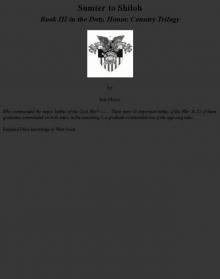 Sumter to Shiloh
Sumter to Shiloh Dragon Sim-13
Dragon Sim-13 The Line
The Line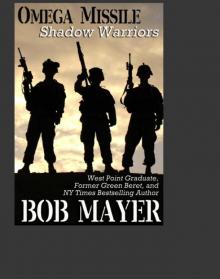 Omega Missile (Shadow Warriors)
Omega Missile (Shadow Warriors) The Rift
The Rift The Jefferson Allegiance
The Jefferson Allegiance Project Aura
Project Aura Synbat
Synbat Ides of March (Time Patrol)
Ides of March (Time Patrol) Nightstalkers a5-10
Nightstalkers a5-10 Lost Girls tc-2
Lost Girls tc-2 West Point to Mexico
West Point to Mexico Mexico to Sumter
Mexico to Sumter Area 51_Invasion
Area 51_Invasion Eternity Base
Eternity Base The Line bo-2
The Line bo-2 Atlantis Gate
Atlantis Gate I, Judas
I, Judas Area 51_Redemption
Area 51_Redemption Bodyguard of Lies
Bodyguard of Lies Cut Out
Cut Out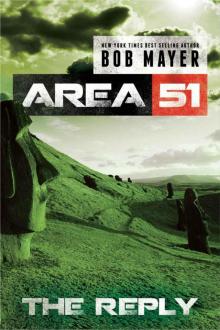 The Reply (Area 51 Series Book 2)
The Reply (Area 51 Series Book 2) Synbat tgb-3
Synbat tgb-3 The Book of Truths a5tn-2
The Book of Truths a5tn-2 Eyes of the Hammer (The Green Beret Series)
Eyes of the Hammer (The Green Beret Series)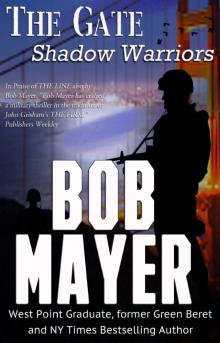 The Gate
The Gate The Gate bo-1
The Gate bo-1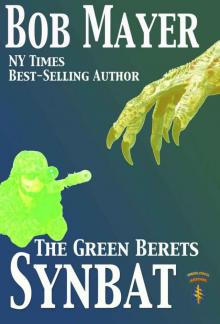 Synbat v5
Synbat v5 Omega Sanction
Omega Sanction Z
Z Chasing the Son
Chasing the Son Nightstalkers
Nightstalkers The Book of Truths
The Book of Truths Dragon Sim-13 tgb-2
Dragon Sim-13 tgb-2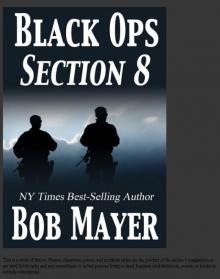 Section 8
Section 8 Chasing the Ghost v5
Chasing the Ghost v5 Psychic Warrior
Psychic Warrior Chasing the Lost
Chasing the Lost The Kennedy Endeavor (Presidential Series Book 2)
The Kennedy Endeavor (Presidential Series Book 2)